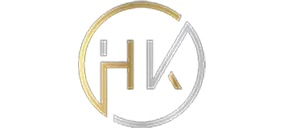10 月 . 11, 2024 21:09 Back to list
Choosing the Right Wheel Bearing Hub Seal for Optimal Performance and Longevity
Understanding Wheel Bearing Hub Seals Importance, Function, and Maintenance
Wheel bearing hub seals play a crucial role in the performance and longevity of vehicle wheel assemblies. These unassuming components often go unnoticed until a problem arises, yet they serve as the first line of defense against contaminants and moisture that can lead to significant damage to wheel bearings and other related components. In this article, we delve into the importance, function, and maintenance of wheel bearing hub seals.
What is a Wheel Bearing Hub Seal?
A wheel bearing hub seal is a rubber or plastic component that fits into the wheel bearing assembly, designed to prevent water, dust, dirt, and other debris from entering the bearing compartment. It also keeps the lubrication grease contained within the bearings. Proper sealing is essential for the optimal function of the wheel bearings, which in turn influences the overall performance of the vehicle.
Importance of Wheel Bearing Hub Seals
The primary function of wheel bearing hub seals is to maintain the integrity of the wheel bearing grease and protect against environmental contaminants. Wheel bearings are subjected to varying loads, temperatures, and moisture levels during operation. If contaminants infiltrate the bearings, they can cause premature wear, corrosion, and even complete bearing failure. A compromised bearing can lead to severe consequences, including vehicle instability, increased stopping distances, and costly repairs.
In addition to providing protection, wheel bearing seals help maintain the correct amount of grease within the bearing assembly. Over time, grease can break down or leak out. Without a proper seal, grease loss can lead to insufficient lubrication, overheating, and ultimately bearing failure. Therefore, maintaining the functioning of these seals is paramount for vehicle safety and reliability.
Functionality of Wheel Bearing Hub Seals
Wheel bearing hub seals are designed with specific features to enhance their performance. The typical design includes a lip that makes contact with the inner or outer race of the bearing. This contact creates a tight seal, preventing contaminants from entering while allowing the grease to remain inside. Additionally, some designs incorporate springs or secondary seals that add extra protection against fluid intrusion.
Most seals are made from durable materials like rubber, silicone, or polymer compounds, which are engineered to withstand the high temperatures and pressures associated with vehicle operation. As they endure wear over time, regular inspection becomes crucial to ensure they continue to perform effectively.
Signs of a Failing Wheel Bearing Hub Seal
wheel bearing hub seal

Recognizing the signs of a failing wheel bearing hub seal can save drivers from more severe issues down the road. Common indicators include
1. Unusual Noises Grinding, humming, or rumbling noises that increase with the speed of the vehicle can signify bearing exposure to contaminants.
2. Grease Leakage Visible leakage around the wheel hub indicates a compromised seal allowing grease to escape, which can lead to insufficient lubrication.
3. Vibration or Steering Issues If a bearing starts to fail because of a bad seal, it can cause vibrations in the wheel or difficulties in steering, indicating the need for immediate inspection.
4. Corrosion or Rust If rust or corrosion is visible on the bearing components, it's a strong sign that moisture has entered the assembly due to a seal failure.
Maintenance and Replacement
To keep wheel bearing hub seals functioning effectively, routine maintenance checks are essential. During regular vehicle service, mechanics typically inspect seals for signs of wear or damage. If a seal is found to be compromised, it should be replaced promptly to avoid further damage to the wheel bearings.
Replacing a wheel bearing hub seal typically involves removing the wheel and brake components, extracting the old bearing and seal, and installing a new one. Proper installation is critical to ensure that the seal performs effectively. It’s advisable to consult with a professional mechanic for seal inspections and replacements to ensure the job is done correctly.
Conclusion
In conclusion, wheel bearing hub seals are fundamental components that contribute to the safety and durability of vehicle wheel assemblies. Their role in preventing contamination and retaining lubrication cannot be overstated. Regular maintenance and timely replacement of these seals can help avoid unexpected vehicle issues, ensuring a safer and more reliable driving experience. Keeping an eye on these often-overlooked components is crucial for any vehicle owner who values performance and safety on the road.
-
The Power of Advanced Sealing: High-Pressure Solutions for Modern Machinery
NewsOct.29,2024
-
Optimizing Machinery with High-Performance Oil Seals
NewsOct.29,2024
-
Maximizing Machinery Efficiency with Advanced Oil Seals
NewsOct.29,2024
-
Ensuring Equipment Longevity with Quality Oil Seals
NewsOct.29,2024
-
Enhance Equipment Performance with Quality Oil Seals
NewsOct.29,2024
-
Custom Oil Seals for Specialized Machinery Needs
NewsOct.29,2024
-
The Role of Wiper Seals in Dust Sealing and Oil Protection
NewsOct.20,2024
Products categories
















